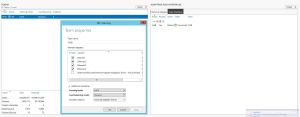NIC Teaming using Windows Server 2012(R2) has never been any easier. However, you will be presented with two options for the Teaming Mode – Switch independent or LACP. If in doubt go with the first one as this will always work and doesn’t require any further configuration. If the network switch infrastructure supports the Link Aggregation Control Protocol (LACP) I usually prefer this method, particular for production environments. Once the switch is enabled for LACP, the team dynamically configures the switch whenever it comes online or is reconfigured. This means that you do not need to constantly log calls for the network admins when you are doing physical server operations.

Cisco IOS command to add 4 interfaces into a single Ethernet Channel.
[codesyntax lang=”bash”]
interface Port-channel2 description GLW-HYP-01 LACP switchport access vlan (your VLAN number(s)) if applicable otherwise omit line) switchport mode access switchport nonegotiate ! interface GigabitEthernet1/0/1 description Hyper-V LACP switchport access vlan (your VLAN number(s)) if applicable otherwise omit line) switchport mode access switchport nonegotiate spanning-tree portfast channel-group 2 mode active ! interface GigabitEthernet1/0/2 description Hyper-V LACP switchport access vlan (your VLAN number(s)) if applicable otherwise omit line) switchport mode access switchport nonegotiate spanning-tree portfast channel-group 2 mode active ! interface GigabitEthernet1/0/3 description Hyper-V LACP switchport access vlan (your VLAN number(s)) if applicable otherwise omit line) switchport mode access switchport nonegotiate spanning-tree portfast channel-group 2 mode active ! interface GigabitEthernet1/0/4 description Hyper-V LACP switchport access vlan (your VLAN number(s)) if applicable otherwise omit line) switchport mode access switchport nonegotiate spanning-tree portfast channel-group 2 mode active
[/codesyntax]